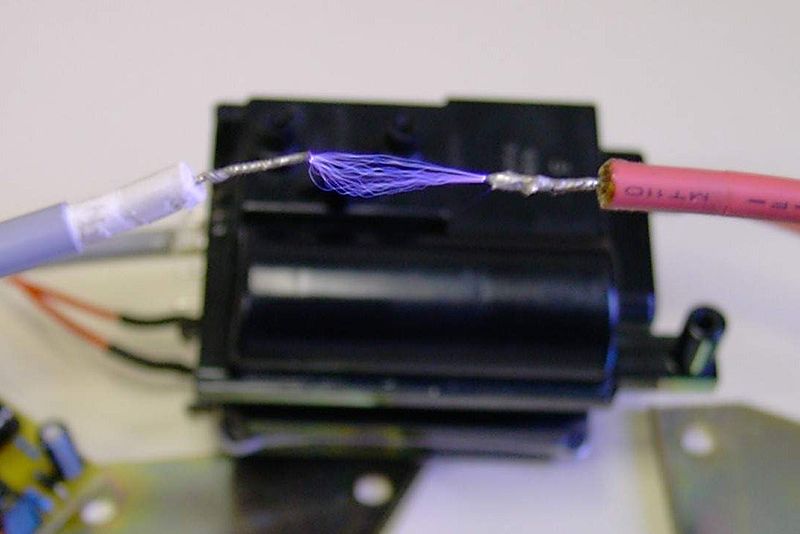<p style="text-align: left;">Electricity is one of the most useful inventions of modern science. We use electricity in our homes to power everything, including charging our mobile devices. We&#8217;re even driving electric cars, from small efficient mom-mobiles to high-end sedans and sports cars. With the growth of direct electric generation from alternative energies such as wind and solar, we may even be entering the second golden age of electricity.</p>
<p>Electricity is also growing in popularity in the medical community, where electric shock is being used in more applications than ever before. Here are some of the electroshock applications that doctors are currently using.</p>
<h3>Wrinkles</h3>
<p>Wrinkle treatment is a major area of concern for Baby Boomers who are showing their age and worse, which is why everyone is in the quest for a new wrinkle treatment. One older treatment that is getting renewed attention is electric muscle toning. This procedure applies electrodes to your face and uses an electric current to stimulate the movement of facial muscles. The goal is to build up muscle volume in the face, which can combat tissue loss and improve your facial muscles&#8217; ability to support your facial tissues.<br />
In clinical trials for one device, people saw improvement in facial muscle volume, and 80% said their face looked lifted.</p>
<h3>Migraine Treatment</h3>
<p>Migraines are mysterious headaches. Although 37 million Americans suffer from them, they remain one of the most underfunded neurological conditions in terms of research dollars, despite the fact that many migraine treatments have spotty success rates, serious side effects, or both.<br />
However, experiments with electric shocks for migraines may help migraineurs (people with migraines) to experience fewer attacks without the side effects common with drug treatments. The most common use of this approach is to implant a device, similar to a pacemaker, in the migraineur to deliver electric shocks to the vagus nerve. The vagus nerve runs from the neck to the brainstem, and allows the delivery of shocks to the brainstem to lead to pain reduction.<br />
A newer option, called gammaCore, is simply a handheld unit that a migraineur would just apply to their neck when they started feeling the first symptoms of a migraine. They should experience relief of symptoms within about half an hour. The treatment is not yet FDA-approved, but it&#8217;s in clinical trials.</p>
<h3>Central Sleep Apnea Treatment</h3>
<p>Sleep apnea is a condition in which a person&#8217;s breathing stops regularly during sleep. Most of the time, this is just because a person&#8217;s airway closes due to relaxation of muscles during sleep.In central sleep apnea, breathing stops because the brain stops sending signals to the diaphragm and other breathing-related organs. Current treatment involves blowing air into the throat to keep a person supplied with oxygen even if their breathing stops. This treatment helps about half of central sleep apnea sufferers, if they use it, which many don&#8217;t because they find the mask uncomfortable.<br />
However, a new electroshock therapy promises to maintain breathing. The device stimulates the phrenic nerve, which controls the diaphragm. The diaphragm is the muscle that controls the movement of our lungs during breathing. It&#8217;s still in the experimental stages, but it has been shown to improve breathing and heart rate.</p>
<h3>Depression</h3>
<p>Electroconvulsive Therapy (ECT) is not a new treatment for depression. In fact, it&#8217;s the accepted treatment, and considered by many to be the &#8220;gold standard&#8221; of depression treatment. What is changing, though, is the way the treatment is applied. We are moving away from what people think of as electroshock therapy, in which a person is strapped down into a chair while high voltage electric currents are applied to their bodies.<br />
Now we are working on a subtler approach that involves the use of electricity applied directly to the brain, with small electrodes precisely placed near Brodmann Area 25, which shows depressed activity in depressed patients. The hope is that stimulation of just this area may help depressed patients feel a livelier mood without the need for drugs that can have significant side effects.</p>
<h3>The Future of Electric Shocks in Medicine</h3>
<p>It is likely that the trends seen here will continue, as we move from larger electric currents to smaller ones. We may see more implanted devices, but also some handheld devices that don&#8217;t require surgery, depending on the condition and the treatment. The goals will be better treatment for more conditions, with less disruption and fewer side effects, and it&#8217;s likely we will all benefit from fulfilling these goals.</p>
<h5>Featured images:</h5>
<ul>
<li> <span class="license">License: Creative Commons</span> <span class="source">image source</span></li>
</ul>
<p>Dr. Matthew Candelaria (PhD, U of Kansas 2006) is an experienced freelance writer of thousands of articles on medical treatment, aesthetics, and law. He is also an award-winning science fiction author and scholar.</p>

Modern Medical Treatments That May Shock You
